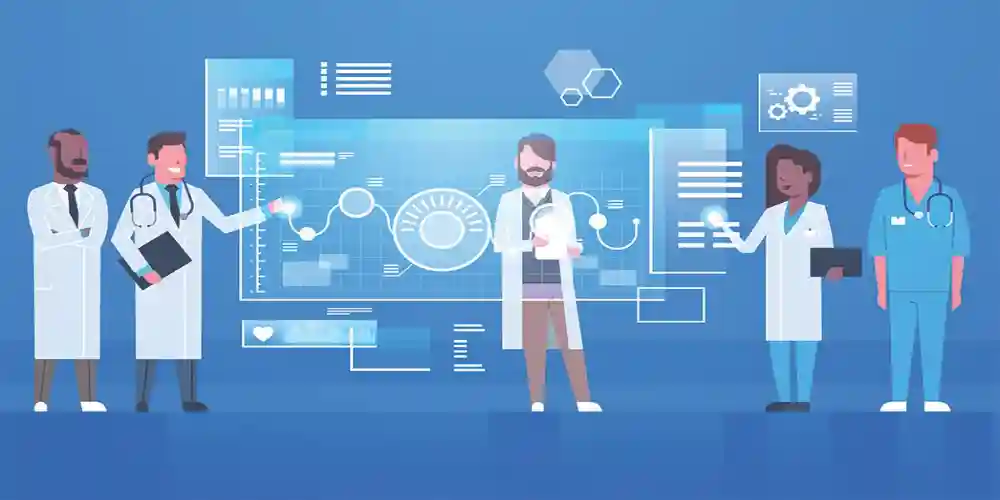Healthcare technology has advanced so fast that some staff may not be proficient in using the new technology. To prevent this, hospitals need to develop training programs.
Workflow automation can also help reduce the workload for overstretched hospital departments. For example, by enabling medical professionals to automatically export patient monitoring data into electronic records.
1. Better Communication
Improved communication between physicians allows them to collaborate and complete tasks. Instead of relying on pagers or walkie-talkies, healthcare professionals can use instant messaging apps to communicate with each other in real time.
This can also reduce the amount of waste that comes from managing spreadsheets for on-call schedules and alerting physicians via phone or pager. For example, HIPAA-compliant pager replacement mobile apps like OnPage allow you to automatically send and receive on-call schedules and alerts.
2. Remote Monitoring
Remote monitoring technologies enable healthcare practitioners to evaluate patients outside of a clinical visit. This allows for a more comprehensive understanding of the patient’s condition and can help identify issues before they worsen.
RPM can also help address physician shortages and allow physicians to offer care to more patients without increasing their workload. This can increase patient retention and improve overall outcomes.
3. More Efficient Workflow
Having efficient workflows is essential for healthcare organizations. A simple mistake in the transfer of information can cause severe consequences, so it’s vital to have formal processes that reduce room for error.
During the COVID-19 pandemic, many medical facilities turned to technology to improve patient care and engagement. Digital upgrades like telemedicine, patient portals and two-way communication apps make the patient experience more comfortable.
4. Better Patient Care
Patient outcomes are an important measure of healthcare effectiveness. These are based on things such as the time patients wait for treatment, the number of medical mistakes made by staff members and whether or not readmissions are avoided.
Technology can help improve patient care in a variety of ways. For example, telehealth tools allow patients to book appointments online and communicate with doctors remotely.
5. Enhanced Security
Security technology helps to ensure that only authorized users have access to patient data. Performing security drills regularly can help to reinforce this message to everyone working at the hospital.
In time-pressured environments, it is easy for clinicians to get tunnel vision and miss vital information. Monitoring technologies can help prevent this by alerting someone when a situation arises that needs attention.
6. Personalized Care
Digital tools and products like patient portals allow patients to easily access their own data, communicate with their providers quickly and efficiently, schedule appointments or self-report health tests. This enables personalized care.
This personalization can help to increase the confidence levels in clinicians’ chosen treatment methods, decrease patient stress and instill belief in a prescribed care plan crew logout. It can also lead to improved health outcomes and business performance.
7. Enhanced Patient Experience
During the COVID-19 pandemic, technology helped patients stay healthy and safe. Now, new technologies like augmented reality and virtual reality are enabling healthcare professionals to perform more advanced procedures remotely.
Some examples include telemedicine and AI-powered symptom checkers that help patients discover what level of care they need. This could reduce the number of people who visit the emergency room when they don’t need to.
8. Better Patient Engagement
Easier access to information has boosted patient engagement, especially with online portals and secure telemedicine. Using healthcare customer relationship management tools like a CRM platform can help medical professionals manage their patients’ care effectively.
For example, AI symptom checkers allow patients to enter their symptoms and receive a likely diagnosis without needing the physician’s intervention. This can reduce the need for unnecessary emergency visits.
9. Easier Access to Information
Easier access to information is a vital part of empowering patients. However, it is important to make sure that the information available is accredited and not misguided hope.
Online portal technology allows patients to log on and instantly access their lab reports, doctor notes and medication records. This reduces communication failures between different clinicians and improves patient care.
Electronic prescribing practices also help minimize prescription errors. Medical alerts and clinical flags can also prevent prescribers from deviating from accepted protocols.
10. Enhanced Efficiency
Digital technologies and tools increase efficiency within medical facilities. They help staff members work more quickly and accurately, which leads to better patient care.
EHRs are a great example of a digital technology that helps improve patient care. These records allow doctors to access a patient’s medical history easily, which allows them to make more informed decisions.
It also makes it easier for patients and medical billers to access their information.






